Today, you will learn how to cook lasagna and more!
As you may already know, lasagna is a pasta dish that uses broad, flat noodles. It’s originally an Italian cuisine (like spaghetti) – but now, it’s being made (and enjoyed) all over the globe.
What’s really great about lasagna is that it’s a versatile dish. You can serve it as the main course or as the snack. And because it’s truly delicious, everybody loves it – yes, even kids.
There are many different variations and flavors of lasagna – and restaurants that serve pasta dishes usually have this type of food. However, if you want to save money or simply want to customize this dish, it’s doable, because it’s really quite easy to make.
So, don’t be intimidated by how a lasagna looks like (especially the many layers) and how this food is served in restaurants. You will learn all the methods and techniques to cooking lasagna in this article, right now. I also have a collection of the Top 10 yummy lasagna recipes for you in this article.
More...
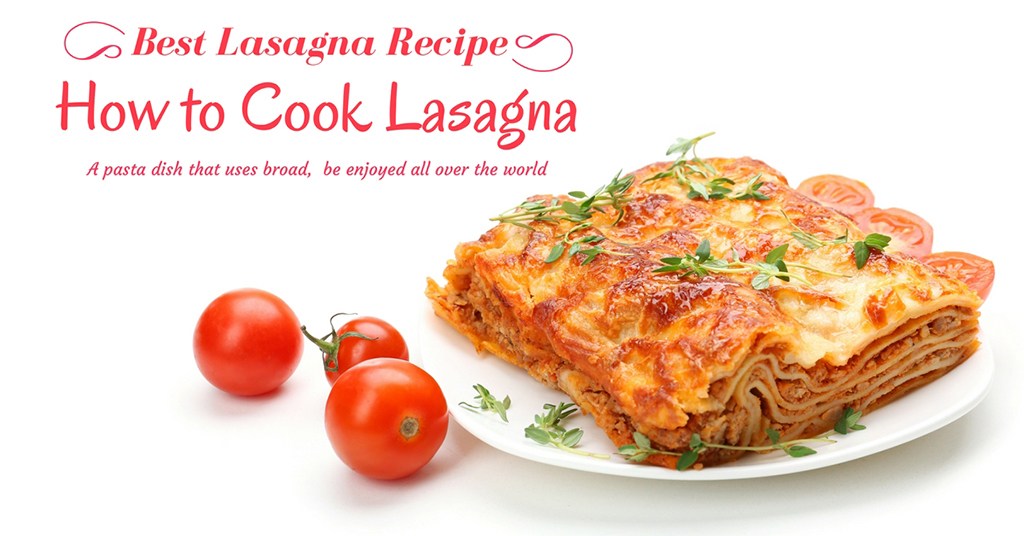
Overview of Lasagna
What is Lasagna?
Lasagna (singular) or Lasagne (plural) can be referred to as a VERY tasty dish. It’s made up of many layers of lasagna sheets (3 or more) that include mixtures of sauces, cheeses, and other ingredients.
Typically baked, lasagna is usually made in a large batch (standard size is 13x9 inches) and can feed a number of people. This food is then served by cutting a portion of the whole dish so that individual servings can be eaten.
Origins of Lasagna
According to the Book of Cookery that dates back to the 14 Century, the basic concept of lasagna already existed way back then in Italy. It was first served in Naples (a city in Italy) and the original recipe included layers of pasta, sausages, meatballs, eggs (hard boiled), and cheeses (particularly ricotta and mozzarella).
Today, variations of lasagna exist all over the world. Typically tomato-sauce based, meats like beef, pork, chicken, and even fish can be used for lasagna recipes. Vegetables can also be used either as main ingredients or additional ingredients (such as zucchini, eggplants, spinach, mushrooms, and olives).
As a dish that’s really tasty and flavorful, herbs and spices such as onion, garlic, and oregano are also used in lasagna recipes. And for the cheese ingredient (which is a basic ingredient in a traditional lasagna recipe), more variations can now be integrated into the dish.
So, aside from ricotta and mozzarella, cheddar, cottage, cream cheese, and other types of cheeses can be used in lasagna recipes.
What Does Lasagna Taste Like?
Lasagna recipes taste so good because they’re made up of a lot of ingredients and different herbs and spices. And so, all the flavors of meats, vegetables, seasonings, and flavorings all come together in one great blend.
For meaty lasagna dishes, the meat flavors come out with a balanced flavor of the seasonings and spices (flavorings shouldn’t be overpowering). And the cheese – oh, the cheese – that distinct cheesy taste should be felt in every bite of lasagna.
The way the pasta sheets are made is also important in making a lasagna. Aside from the creation of layers, the lasagna sheets should be firm (al dente), but not tough. And, no – it definitely shouldn’t be soft and soggy.
Different Types of Lasagna
There are 3 basic types of lasagna dishes:
- Meat or Meaty Lasagna
- Vegetable Lasagna or Vegan Lasagna
- Seafood Lasagna
Meat or Meaty Lasagna
Traditionally, lasagna dishes are made using ground beef and sausages as the main ingredients. These days, however, pork and chicken are also widely used (especially for homemade recipes).
A very simple meat lasagna can have the following ingredients:
- Lasagna noodles
- Ground beef
- Sausage
- Tomato sauce
- Ricotta cheese
- Parmesan cheese
- Garlic
- Oregano
- Parsley
- Basil
Basically, you just need to make a very flavorful meat sauce to layer your lasagna with. This is then alternated with layers of cheese mixtures.
Vegetable Lasagna or Vegan Lasagna
While you can incorporate vegetables in a traditional meaty lasagna, you can go all-veggies if you want to. You can even replace the lasagna sheets with vegetable sheets like zucchini and eggplants (just cut them thinly, lengthwise).
A vegetable lasagna recipe can have the following ingredients:
- Eggplant cutlets
- Tomato sauce
- Spinach
- Olives (chopped)
- Roasted peppers
- Ricotta cheese
How to make Vegetable Lasagne Via chefharpalsingh
In this example, the eggplant cutlets are used as lasagna sheets. Each layer is then comprised of tomato sauce, spinach, olives, pepper, and cheese. Simple (and healthy), isn’t it?
For a truly vegan recipe, you can do the following:
- Substitute meat with soy-based sausage products
- Use vegan cream cheese.
- Use tofu to thicken the sauce.
- Use soy-based cheese.
- Note: Vegetables that go well with lasagna recipes include yellow squash, mushrooms (this can also replace meat), spinach, etc
Seafood Lasagna
If you want to make a seafood lasagna, you can use the following:
Fish
Lobster
Shrimps
Scallops
Crabs
For a simple seafood recipe, you can make a tuna lasagna dish with the following ingredients:
- Tuna (canned)
- Lasagna sheets
- Olive oil
- Onion
- Garlic
- Tomatoes
- Tomato paste
- Sugar
- Oregano
- Basil
- Lemon juice
- Mozzarella cheese
- Parmesan cheese
- Butter
- Flour
- Milk
Tuna Lasagna - Easy Homemade Lasagna Recipe Via Very Easy Recipes
The above ingredients will allow you to make a tuna sauce that’s tomato-based (using tomato paste) and a béchamel sauce as well. This lasagna recipe makes for a great option when cutting down on pork, beef, and chicken meat.
Side Dishes to Eat with Lasagna

I’m sure all lasagna lovers will attest to the fact that lasagna can stand on its own without any side dishes. It’s a filling dish in itself, you see. However, if you feel the need to serve it with something else, a vegetable dish would make a lot of sense (especially if your lasagna is meat based). And so, depending on the type of lasagna, the following side dishes can be served:
- Garlic bread
- Caesar salad
- Sautéed zucchini
- Green leafy vegetables and beans
- Mozzarella sticks
- (extra) Meatballs
- (extra) Sausages
- Onion soup
- Stir fried broccoli
- Grilled vegetables
When considering side dishes for your lasagna recipes, remember that this dish is typically high in starch and protein already. For this reason, serving it with vegetables (to balance it out, nutritionally) makes for a logical choice.
Other types of food that can be served with lasagna:
- For drinks, coffee, juice drinks, and any of your favorite drinks will surely go well with lasagna.
- For desserts, you can have fruits or sweet goodies.
Complete Guide to Cooking Lasagna
Methods to Cook Lasagna
Traditionally, lasagna recipes are baked to perfection. While most (if not all) of the ingredients are already cooked, it still needs to be baked to get everything combined and the flavors blended well (and to melt the cheese ingredients, of course).
In this section, I will show you how lasagna is cooked the traditional way (by baking) and also by using a skillet and a crock pot (or slow cooker).
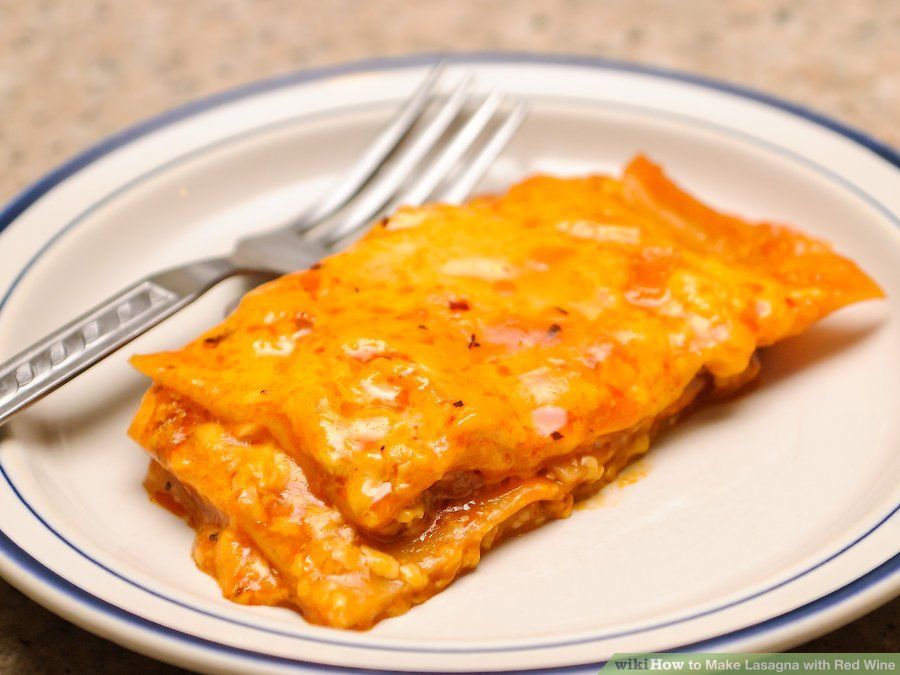
How to Make Lasagna with Red Wine Via wikihow
Basic Baking Method
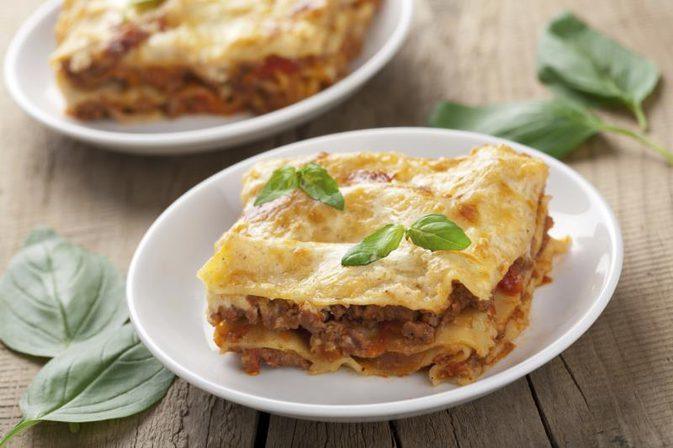
The Easiest & Best Lasagna With No Cottage Cheese Via livestrong
Here are some important tips to keep in mind when baking lasagna:
- Preheat oven for about 30 minutes beforehand to make sure that you’re baking at the right temperature.
- Place the lasagna tray in the middle of the oven for proper heat circulation and even cooking.
- Bake lasagna at a medium high heat of 350 to 375 degrees Fahrenheit
- Cover the lasagna while baking so as not to overcook (or over brown) the top layer while the middle layers are still cooking.
A basic baked lasagna can have the following ingredients:
- Lasagna noodles
- Ground beef/ veal/ lamb/ Italian sausage or a combination of everything
- Ricotta cheese
- Mozzarella cheese
- Onion
- Garlic
- Tomatoes
- Tomato sauce
- Olive oil
Here are the steps to baking lasagna:
STEP 1 |
|
STEP 2 | Add ground meat and cook until brown |
STEP 3 | Season with salt and pepper (and other herbs) as the meat sauce is cooking. |
STEP 4 | Cook tomato sauce and tomatoes in a separate pot and simmer |
STEP 5 | Pour the tomato sauce over the cooked meat. Simmer |
STEP 6 | Mix Ricotta cheese with eggs (beaten) |
STEP 7 | Get a baking pan (at least 13x9x2 inches) and spoon a layer of sauce at the bottom of the pan |
STEP 8 | Lay the first layer of lasagna noodles (slightly overlapping is ok) |
STEP 9 | Spoon Ricotta mixture over the lasagna noodles |
STEP 10 | Spoon sauce over the Ricotta cheese |
STEP 11 | Put a layer of mozzarella cheese |
STEP 12 | Continue layering noodles, ricotta mixture, meat sauce, mozzarella cheese up to the top layer |
STEP 13 | Top with Parmesan cheese |
STEP 14 | Bake at 375 degrees Fahrenheit for 30 to 40 minutes |
Skillet Method
Yes, it’s actually possible to cook lasagna over the stove, using a skillet. I will show you how you can do this easily and quickly in the example below.
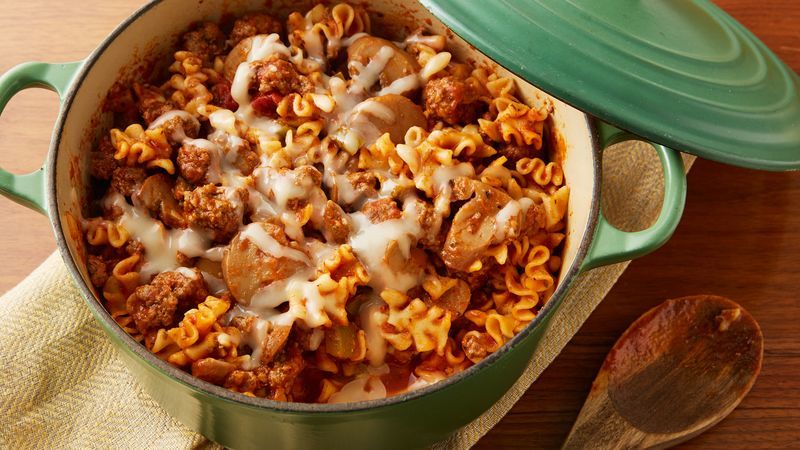
Easy Skillet Lasagna Via bettycrocker
Prepare the following ingredients to make a simple lasagna recipe on a skillet:
- Ground beef
- Onion
- Bell peppers
- Mini lasagna noodles (you can also use regular lasagna noodles – just break them into small pieces)
- Water
- Italian seasoning
- Basil pasta sauce (jar)
- Mushrooms
- Mozzarella cheese
Since this recipe uses a ready-made jar of sauce, preparing this lasagna dish is quick and easy. The steps are broken down below.
STEP 1 | In a Dutch oven, cook the beef, onions, bell peppers for about 6 minutes (medium high heat). Remember to stir occasionally. |
STEP 2 | When beef is already brown, drain |
STEP 3 | Add all the other ingredients except for the cheese. Allow boiling before reducing heat and let it simmer. |
STEP 4 | When pasta is tender (al dente), sprinkle the cheese and allow to cook for a few more minutes until the cheese is melted |
STEP 5 | Allow resting for a while before serving |
Slow Cooker Method
I am about to show you a way to cook lasagna in the slow cooker or crock pot. While cooking time can be anywhere from 2 to 4 hours, the actual procedure is simpler compared to making lasagna in the oven.
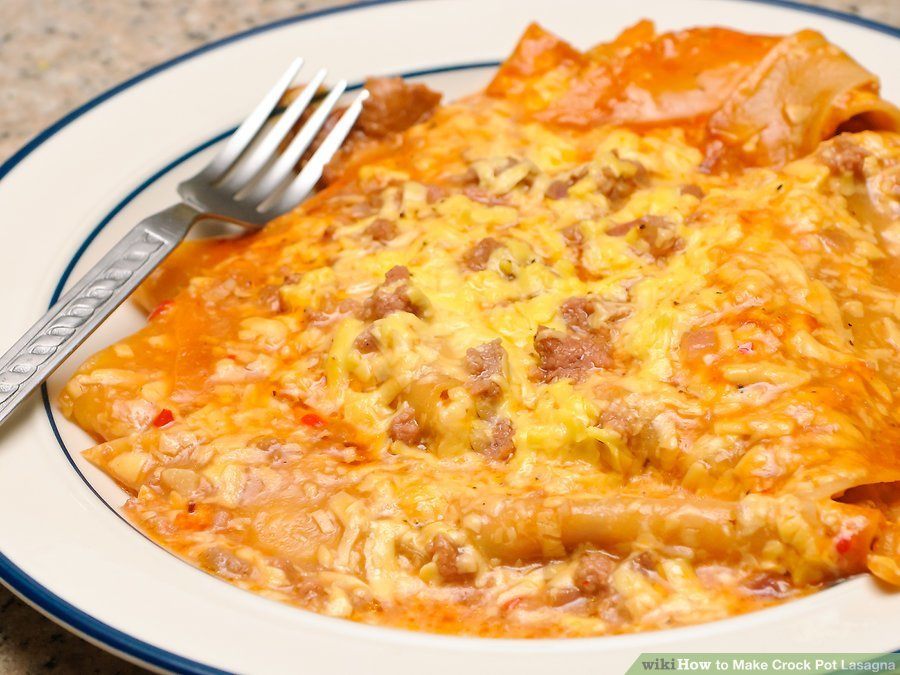
How to Make Crock Pot Lasagna Via wikihow
For this example, you can use the following ingredients in making lasagna in a slow cooker:
- Lasagna noodles
- Ground beef
- Egg
- Parmesan cheese
- Cottage cheese
- Spaghetti sauce
- Water
- Mozzarella cheese
Do the steps listed below to cook this lasagna recipe using crock pot:
STEP 1 | Cook and drain the ground beef. Set aside |
STEP 2 | Using a saucepan, combine the ground beef, sauce, and water |
STEP 3 | Get a bowl and combine the mozzarella cheese, egg, cottage cheese, and parmesan cheese. Mix everything well |
STEP 4 | To assemble the lasagna in the slow cooker, pour a cup of the meat mixture at the bottom of the pot |
STEP 5 | Position 3 pieces of uncooked lasagna noodles on top of the meat sauce |
STEP 6 | Place cheese mixture on top of the lasagna noodles |
STEP 7 | Repeat layering with meat sauce, lasagna, and cheese. |
STEP 8 | For the top layer, finish off by spreading mozzarella cheese and parmesan cheese |
STEP 9 | Cook on high setting for 2 hours or on low setting for 4 hours |
Preparing Ingredients for Lasagna
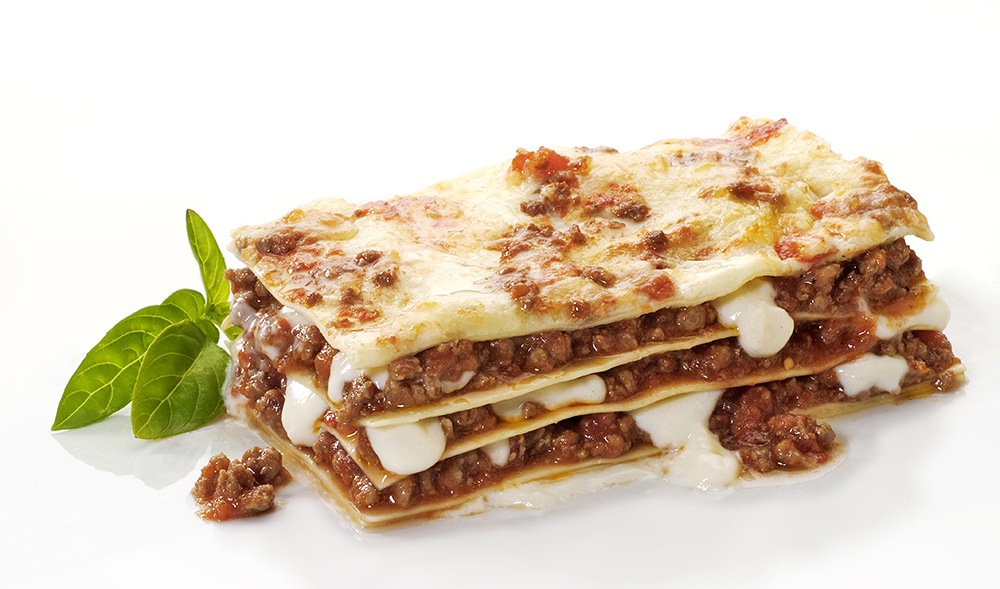
When making lasagna, you basically need to focus on the meat, cheese, and vegetable ingredients. And of course, on the type of sauce (or sauces) that you’re using for a particular recipe.
How to Prepare Meat
Keep these things in mind when preparing the meat ingredients in your lasagna recipes:
- Fresh meat should be cooked thoroughly before assembling the layers in lasagna
- If you’re using frozen meat, thaw this out completely before preparing your lasagna
- If you used thawed frozen meat in your lasagna, the dish is no longer fit to be frozen again for later consumption
How to Prepare Cheese
The most common type of cheese used in lasagna recipes is Ricotta. However, since it’s not solid in form, you need to add beaten egg into the Ricotta mixture.
Aside from Ricotta cheese, Parmesan cheese is also a basic ingredient in most lasagna recipes. This can be mixed with other types of cheeses (for the special cheese mixture) or added as the final, top layer. Still, other types of cheese can be used in a variety of lasagna recipes such as the following:
Mozzarella
Cottage
Pecorino
Provolone
Cream cheese
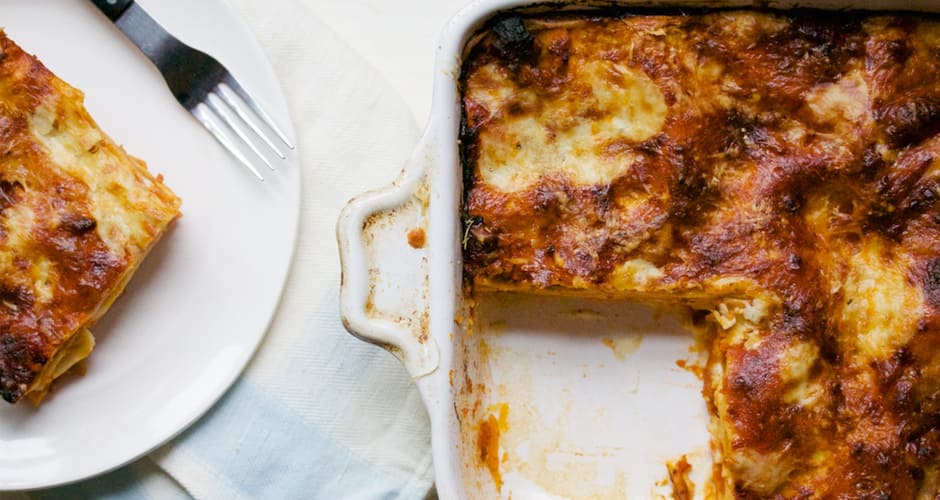
The Complete Guide To Making Lasagna At Home Via firstwefeast
We know that cheese ingredients add creaminess, richness, and flavor to any dish – thereby making it yummier and tastier. However, what you may not know is that cheese ingredients in a lasagna dish also act as binding agents. Yes, cheese helps in making layers of lasagna stay in perfect form instead of a gooey mess.
How to Prepare Vegetables
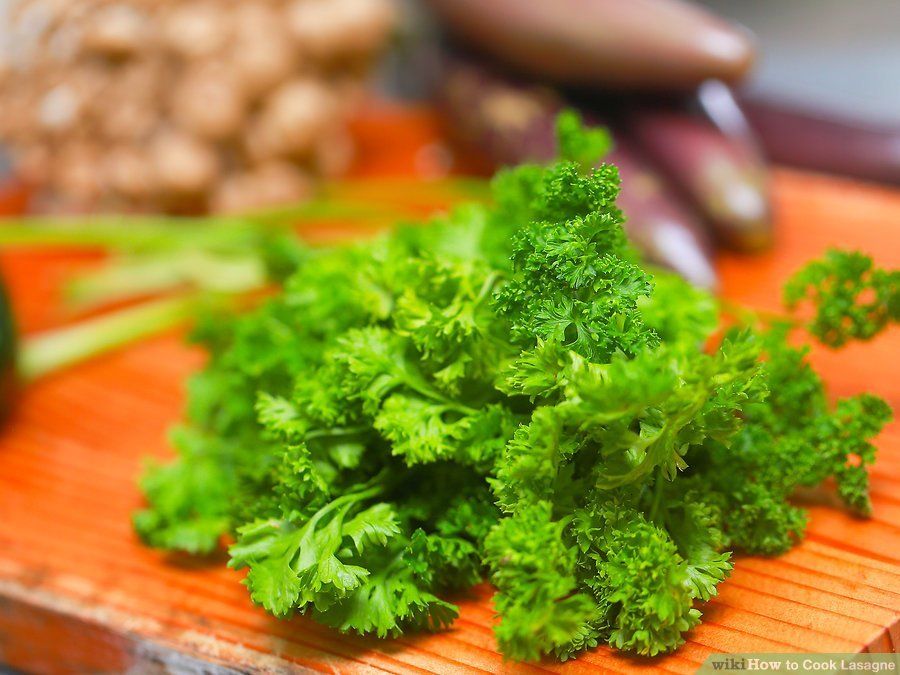
How to Cook Lasagne Via wikihow
Adding vegetables to your lasagna dish will make it healthier and more flavorful as well. However, vegetables have high water content – which can affect the final outcome of your dish. Therefore, when using vegetables in your lasagna recipes, keep the following things in mind:
- Use oven dried tomatoes, not raw tomatoes (which are high in moisture content)
- If you’re using zucchini or eggplants as the substitute for lasagna noodles, cut them lengthwise and bake them first (to dry them out)
- If you’re replacing meat with pure vegetable ingredients, season your chosen ingredients well so as to end up with a meatless but tasty dish
How to Prepare Sauces
When making lasagna, there are 3 basic types of sauces to choose from. Combine these with a cheesy mixture and the resulting lasagna dish will surely taste wonderful. I will discuss the following types of lasagna sauces in this section:
Bolognese Sauce
Bechamel Sauce
Marinara Sauce
Bolognese Sauce
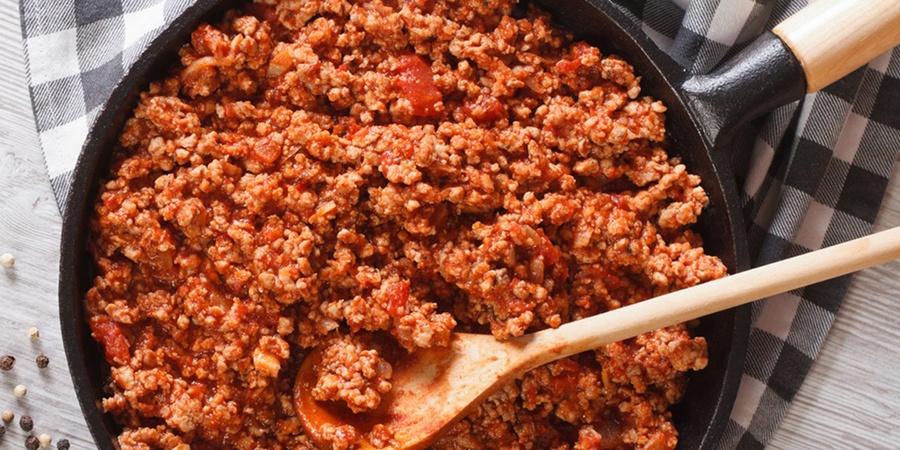
BOLOGNESE SAUCE Via epicurious
If you want a savory, stew-like sauce, go for Bolognese sauce. It involves cooking meat with vegetables and wine until the sauce is reduced and thickened (and flavorful). Bolognese sauce typically makes use of these ingredients:
Meat (pork, beef, venison, etc.)
White wine
Milk
Tomatoes
Seasonings (rosemary, parsley, etc.)
Bechamel Sauce
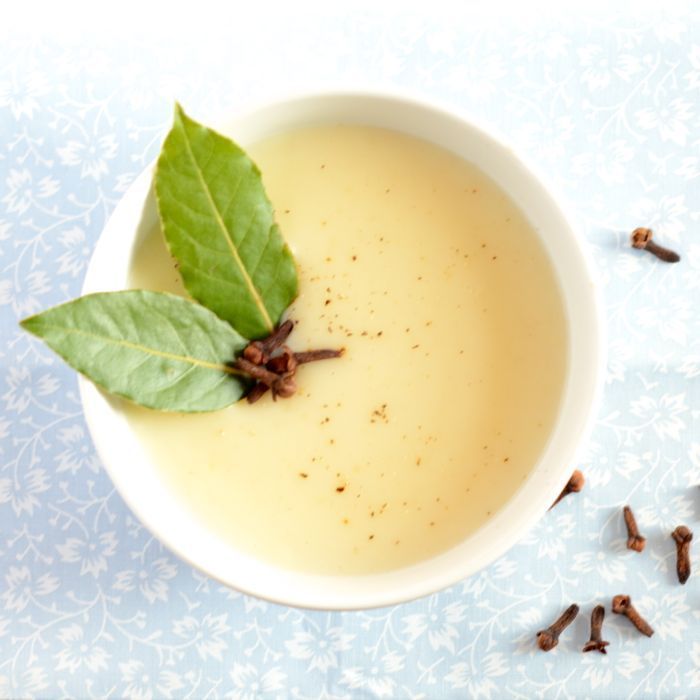
Béchamel Sauce (White Sauce) Via charlotteslivelykitchen
A popular choice in making sauces for a classic lasagna recipe, Bechamel sauce involves the use of flour and milk. Here are the ingredients you need to make this type of white sauce:
Butter
Herbs and seasonings (Cinnamon, Pepper, Bay leaves, etc.)
Flour
Milk
Salt
Marinara Sauce
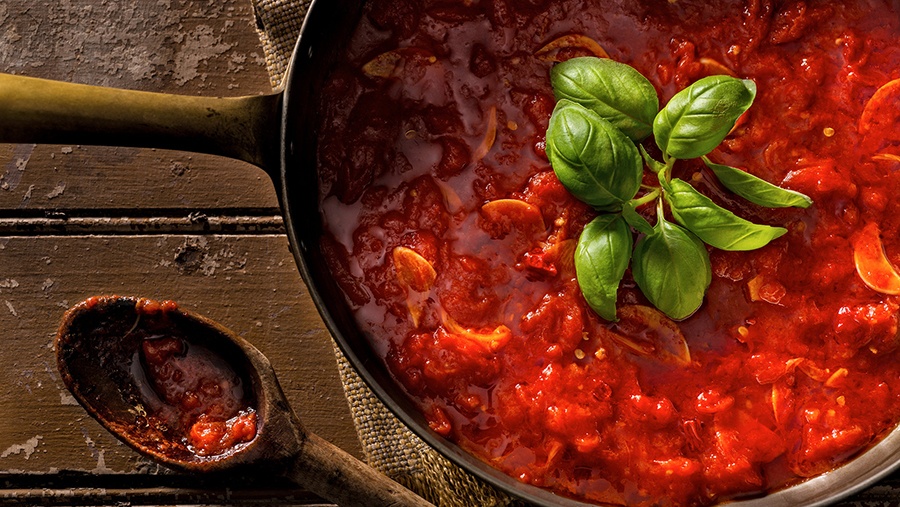
Classic Marinara Sauce Recipe Via cooking.nytimes
This “tomatoey” sauce is a surefire hit with lasagna recipes. It basically needs the following ingredients:
- Tomato sauce
- Onion
- Garlic
- Oil
- Seasonings (oregano, thyme, salt, pepper)
- Tomatoes
How to Cook or Don’t Cook Noodles
When making lasagna, you can either use regular noodles or no-boil noodles. This section is dedicated to giving you step by step instructions on how to use these noodles in making lasagna.
Regular Lasagna Sheet Pasta
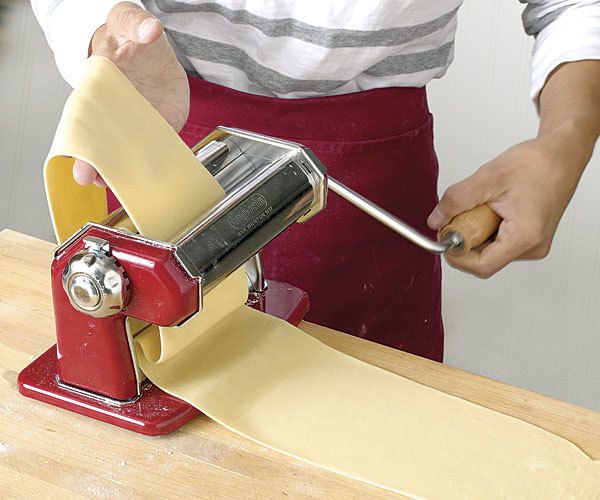
Fresh Pasta for Lasagne Via finecooking
Regular lasagna noodles need to be cooked by boiling (like spaghetti pasta). Here are the steps to doing this:
STEP 1 | Fill a pot with water and bring to a boil |
STEP 2 | Add lasagna noodles to the boiling water |
STEP 3 | Cook a few minutes under the recommended time (since it’s still going to go through another cooking process) |
STEP 4 | Remove from pot, drain, and rinse with cold water |
STEP 5 | Set the cooked lasagna noodles aside, separately (or they will stick together) |
STEP 6 | Use the cooked pasta sheets for assembling the lasagna |
No-Boil Lasagna Sheet Pasta
No-boil lasagna sheets are very convenient to use because they don’t need to be cooked or boiled. To use this type of lasagna pasta, follow the steps below.
STEP 1 | Remove the pasta sheets from packaging and make these accessible during the assembly process of your lasagna. |
STEP 2 | When layering the lasagna, position each sheet properly (breaking excess portions, if needed) |
STEP 3 | No-boil lasagna pasta will cook and rehydrate as you cook the main dish |
How to Layer Lasagna

How to layer the perfect lasagne Via jamieoliver
The art of layering your lasagna can be simple or creative (it’s really up to you). Look at the layering guide below
Basic Layers
Here are some tips to basic lasagna layering:
- Have all your ingredients ready and within reach as this makes layering and assembling your lasagna easier and faster as well
- Keep things (and ingredients) organized by having a container for everything (separately)
- When using meat sauce, make sure that the meat ingredient is fully cooked before using it in assembling and layering your lasagna.
- For vegan lasagna, you can use mushrooms as the substitute for meat
- Sliced zucchini and eggplants can be used as replacements for lasagna sheets
- Use a deep, wide cooking dish (13x9x2 inches) to accommodate all the layers in your lasagna
- If there are excess pasta noodles that extend over the baking dish, tuck these in to prevent burning and drying out
- Using too much sauce can cause a runny lasagna that will collapse when sliced
- Use more sauce for no-boil noodles as these will absorb moisture while cooking

How to Layer Lasagna Via wikihow
The basic steps to layering lasagna are as follows:
STEP 1 | Spread some sauce mixture at the bottom of the pan or dish |
STEP 2 | Lay pasta sheets on top of the sauce. While these can overlap, you can also trim excess portions of noodles to make everything fit into the dish. |
STEP 3 | Spread a layer of filling or cheese mixture on top of the lasagna sheets |
STEP 4 | Repeat the process of layering until you reach the top layer (standard number of layers is 3 or more) |
STEP 5 | Sprinkle cheese on the last, top layer before cooking |
Creative Layers
There are no hard and fast rules as to how to create your layers of lasagna – it truly is customizable, according to your preferences. Below are some tips on how to get more creative with your layers of lasagna.
- Aside from red sauces, you can also use the white sauce in your lasagna recipes (like Alfredo sauce)
- You can swap ricotta cheese with mozzarella cheese for a lower fat option
- You can combine a number of cheeses in one lasagna recipe. The fusion of different flavors of cheeses will create delicious results
- Instead of grated mozzarella, you can use whole slices
- Use ravioli (meat, cheese, mushroom, etc.) instead of regular lasagna pasta.
- For gluten-free lasagna, use vegetables like sliced zucchini or eggplants to replace regular lasagna noodles.
- For meat sauces and mixtures, you can use leftover chicken or steak or whatever – just cut or shred the meat to small pieces.
How to Rest Lasagna
Allowing freshly cooked, hot lasagna to rest is extremely important for serving, eating, and enjoying this dish. To rest lasagna, follow these steps:
STEP 1 | Once cooked, don’t immediately cut into the lasagna (or everything will fall apart). Instead, let it sit and rest in the baking pan, skillet, or slow cooker for AT LEAST 15 minutes. 30 minutes or more is actually better. |
STEP 2 | After 30 minutes of rest (or so), the lasagna is already set and stable and can be sliced. |
STEP 3 | Cut through the lasagna dish and serve a portion on a plate. |
7 Tips and Tricks to Cooking Lasagna
Tip 1 – How to Cook Lasagna Without Ricotta Cheese
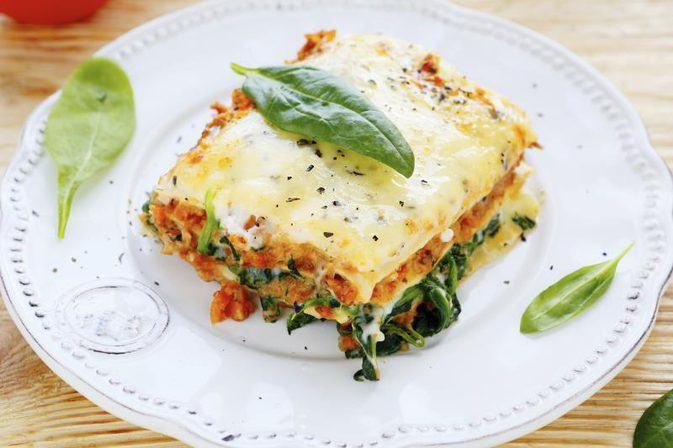
How to Substitute Ricotta in Lasagna Via livestrong
Taste-wise and texture-wise, cottage cheese makes for a great substitute for ricotta cheese. It’s actually a healthier option, too, as cottage cheese is lower in fat content than ricotta cheese.
Here are other ingredients that you can use to substitute for Ricotta cheese:
- Goat cheese
- Pot cheese
- Silken tofu
Tip 2 – How to Cook Lasagna Without Foil
You can still cook lasagna even if you don’t have an aluminum foil. The only reason why you need a foil is that baking lasagna requires trapping steam inside the baking pan so as to cook the dish properly (without drying it up). Therefore, if you have a cookie sheet or a baking sheet that fits over your baking pan, you can use that as cover instead of aluminum foil.
If you really don’t have anything to cover your lasagna with, just make your lasagna sauce somewhat runny. This way, your dish won’t burn and dry up even when you cook it without a cover.
Tip 3 – How to Keep Lasagna from Falling Apart
There are lots of reasons why your lasagna can fall apart (especially when you slice it to serve it). Keep the following points listed below in mind to prevent lasagna from falling apart and becoming a gooey mess.
- Undercook lasagna noodles (for few minutes) as the sheets will absorb extra moisture during cooking.
- Use just enough sauce (not too much) as runny sauce can result in unstable lasagna.
- Use thickened sauce. You can add tomato paste for tomato-based recipes. You can also thicken the sauce by allowing it to reduce in amount during the simmering process.
- Let freshly cooked lasagna rest for about 30 minutes to allow it to stabilize and stick together.
- If you’re using vegetables, cook or dry these first so as to reduce their moisture content.
- Add beaten egg/s to the cheese mixture as this will act as binding agent for the lasagna sheets.
- Substitute soft cheeses with dryer types of cheese (e.g. Parmesan cheese instead of Ricotta cheese, or combine the two)
- Bake your lasagna uncovered 10 to 20 minutes before completion (to allow excess moisture to escape from the dish)
Tip 4 – How to Cut, Slice and Serve Lasagna

How to Cut Lasagna Via Cut Dat
Aside from a delicious lasagna, we also want it to be presentable. Follow the tips below to have a firm and stable lasagna that can be sliced without collapsing.
- Grease the baking pan so that the cooked lasagna won’t stick to the bottom.
- Be generous with the first layer of sauce to prevent the pasta from sticking to the pan once the lasagna is cooked.
- Allow cooked lasagna to rest for some time (30 minutes) so that any excess moisture will be absorbed by the noodles.
- Use a sharp knife to make a clean cut when slicing lasagna
- Use a spatula to support the bottom of the sliced piece of lasagna. And if it’s really unstable, feel free to use another spatula to support the top layers.
Tip 5 – How to Freeze Lasagna
While you can freeze lasagna (cooked or uncooked) for later consumption, keep the following points in mind:
- Don’t freeze twice. Once thawed, resist the urge to freeze leftover lasagna for the second time (food safety vs. bacteria contamination). For this reason, it’s best to freeze lasagna in serving portions so that you don’t need to thaw a large batch when you need it.
- If you’re planning to freeze lasagna, don’t use meat ingredients that have been previously frozen and thawed (for food safety)
- Avoid using aluminum containers when freezing lasagna as it can give off a tin taste when stored too long in the freezer.
- Allow freshly cooked lasagna to totally cool off first before freezing it.
- Freeze lasagna by using freezer-safe, airtight containers.
- Put a label and date on frozen lasagna. It will remain in good condition for about 3 months.
Freezer Lasagna Recipe Via the Daily Connoisseur
Tip 6 – How to Thaw Frozen Lasagna
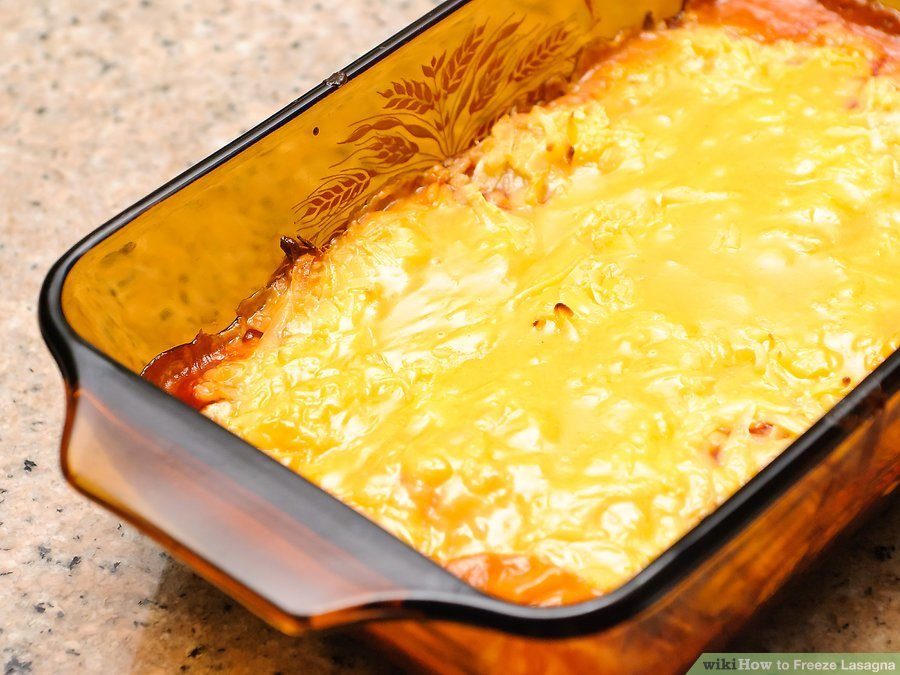
How to Freeze Lasagna Via wikihow
Below, I have listed some pointers for thawing lasagna.
- Thaw frozen lasagna in the refrigerator overnight (it needs a number of hours to thaw properly)
- Don’t reheat partially thawed lasagna as this will result in uneven heating.
- Freshen reheated lasagna by adding chopped fresh basil (or other herbs) on top.
Tip 7– How to Reheat Lasagna
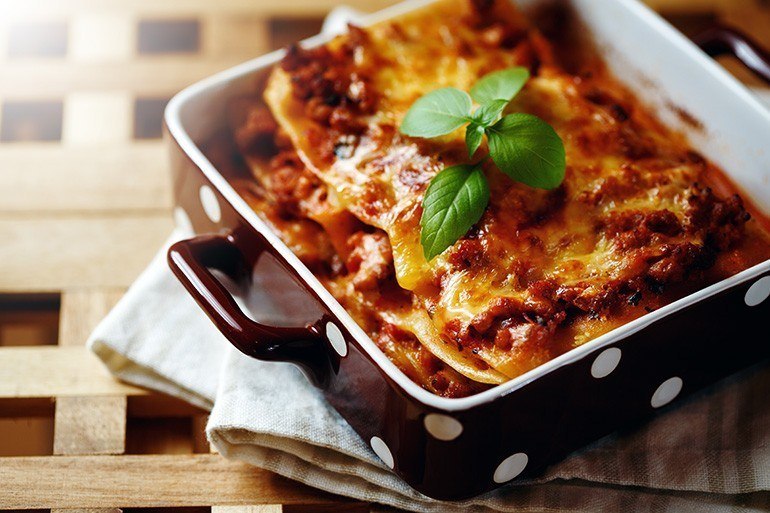
How to Reheat Lasagna Via nomealnohealth
There are 2 ways to reheat frozen lasagna properly:
Microwave
STEP 1 | Use a microwave-safe container to reheat a portion of lasagna. |
STEP 2 | To prevent drying out, add some sauce or water in the container. |
STEP 3 | Cover the lasagna during the reheating process. |
STEP 4 | Heat on high setting for 1 to 2 minutes. |
STEP 5 | Insert a food thermometer into the middle part of the lasagna. It should register 165 degrees Fahrenheit. |
Oven
STEP 1 | Preheat oven to 425 degrees Fahrenheit. |
STEP 2 | Pour some water or sauce over the lasagna to prevent drying. |
STEP 3 | Cover the baking dish with aluminum foil. |
STEP 4 | Bake for about 25 minutes. |
STEP 5 | Insert a food thermometer into the lasagna. The reading should register 165 degrees Fahrenheit. |
Bonus Tips to Making a Perfect Lasagna
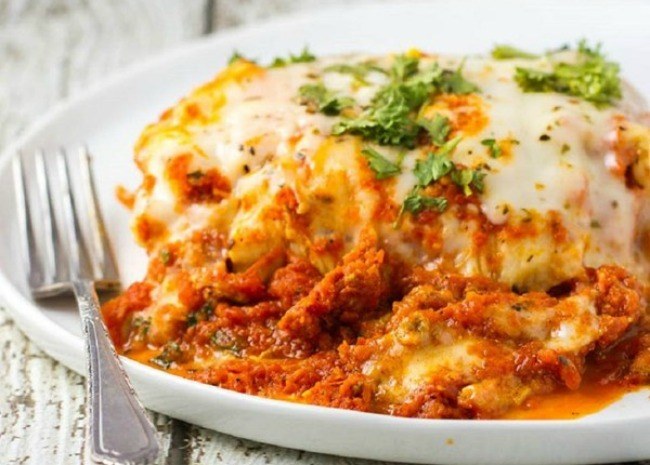
5 Pro Tips for Making the Very Best Lasagna Via dish.allrecipes
Here are some quick tips to making the perfect lasagna:
- For effortless application of ricotta cheese, put the mixture into a Ziploc bag and cut it on one corner. You can then pipe the Ricotta cheese mixture over the sauce.
- If you don’t have the time to make your own lasagna sauce from scratch, you can just use the ready-made sauce in a jar. You can then customize the lasagna sauce by adding your own favorite herbs and spices into it.
- Adding cinnamon will help all the flavors in your lasagna come together in a perfect blend.
- For perfectly melted cheese, cook lasagna at a lower temperature for a longer time.
- Using beef and pork combination in the meat mixture will result in a tastier lasagna (1:1 ratio is recommended)
- Invest in a lasagna pan. One that’s 13x9 inches is a good size (it’s the standard size for baked dishes). Also get one that’s 2 to 3 inches deep to avoid spillovers.
- When including vegetable ingredients in a lasagna recipe, cook and drain them first (to avoid excessive moisture)
6 Common Mistakes When Cooking Lasagna
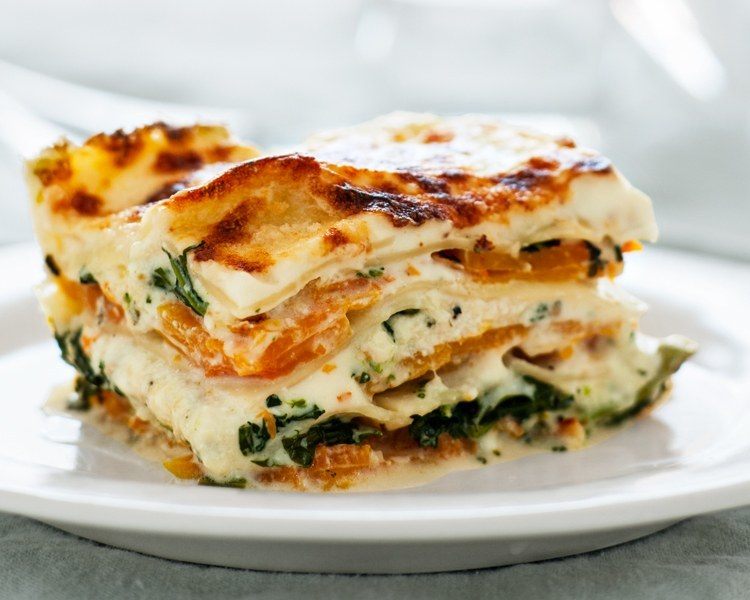
Avoid These Lasagna Common Mistakes Via bonappetit
Mistake 1 – Overcooking Noodles
Overcooked noodles will result in a soggy lasagna. If you’re using regular lasagna sheets that require pre-boiling to cook, it’s best to under cook them. Remember, you still need to cook the assembled lasagna dish again.
Mistake 2 – Letting Cooked Pasta Noodles to Stick Together
To avoid cooked lasagna sheets from clumping together, lay these on an oiled baking sheet after draining and cooling them.
Mistake 3 – Starting with a Layer of Pasta
Starting with a layer of lasagna noodles is a grave mistake when making this dish. You must always (ALWAYS) start with a layer of sauce – this provides moisture to the dish to prevent sticking.
Mistake 4 – Having Very Few Layers
A standard baked lasagna dish has at least 3 layers. Having fewer layers is just weird (and wrong).
Mistake 5 – Not Covering Lasagna While Baking
Use a lid (aluminum foil is fine) to cover your lasagna while baking it to avoid burning and drying out. You only need to remove the cover during the last few minutes of baking to brown the top.
Mistake 6 – Not Using Enough Sauce and Filling
Your lasagna can quickly dry out if you’re not using enough sauce and filling. You can stretch out sauce by adding chicken stock or wine to the mixture.
Experts’ Advices to Making Lasagna
BottomlineInc.com
Joan Wilen and Lydia Wilen are expert food writers from BottomlineInc.com. They’re also health investigators from New York, USA. According to them, it’s not necessary to cook lasagna sheets (yes, the regular kind). If you add extra moisture (sauce or water) to the recipe, the noodles will cook just fine during baking.
HowStuffWorks.com
HowStuffWorks.com’s contributor, Emilie Sennebogen has these tips on making lasagna:
- If you’re using Italian red sauce, oregano and garlic will complement this well.
- Basil and oregano will add sweetness to a lasagna dish and make it tastier.
- To minimize the acidity of tomatoes (for tomato-based lasagna), you can add sugar and baking soda to the mixture.
- For the meat ingredient, ground turkey or chicken is leaner options compared to beef and sausage.
- A typical lasagna recipe uses Ricotta, Parmesan, and Mozzarella cheese combination.
AllRecipes.com
Food lover and expert baker Chelsea Lin of AllRecipes.com has these to say when it comes to cooking lasagna:
- Consider adding Bechamel sauce to a tomato based lasagna recipe. It adds more richness and flavor to the dish.
- The final layer in the lasagna should be covered with a lot of sauce (to avoid drying out and brittleness) and a sprinkle of shredded cheese on top will make it perfect.
- Don’t bother making fresh pasta for your lasagna recipe. Aside from being troublesome, freshly cooked pasta can cause the lasagna to become soggy.
- For a gluten-free lasagna, you can substitute polenta for your pasta.
Delallo.com
Expert food writers from the George Delallo Company have these tips to share with us:
- Strain Ricotta cheese (using a cheesecloth) to avoid having a runny lasagna.
- Have fun in making your lasagna recipes. Experiment with different combinations of meats, sauces, spices, etc.
- Keep an eye on the moisture content of your ingredients (especially vegetables) to prevent having a soupy lasagna.
Epicurious.com
Gabriella Vigoreaux, a contributor at Epicurious.com, has the following things to say when cooking the perfect lasagna:
- Use Italian sausage as the meat option for tomato-based sauces. The texture and flavor will come out just right compared to other combinations of ingredients.
- Use a generous amount of mozzarella cheese. And if you can use fresh mozzarella, the resulting lasagna will be even better.
- When using vegetables, remember that they’re full of moisture (and can make your lasagna soggy). Use only a few, and cook them first to reduce their water content. You can also drain them by squeezing out any leftover moisture after cooking them.
Top 10 Best Lasagna Recipes
Top 1 – Vegetarian Lasagna
Aside from meaty lasagna, you can also make a vegan variety of this dish. You can make a vegetarian lasagna with just the following ingredients:
- Spaghetti sauce
- Carrot
- Oregano
- Lasagna noodles
- Ricotta cheese
- Spinach
- Zucchini
- Mushrooms
- Mozzarella cheese
- Parmesan cheese
This recipe tastes like real lasagna (well, it is) – it actually tastes meaty because of the mushroom ingredient. And since it's loaded with vegetables, this dish is high in vitamins and minerals compared to the typical meaty lasagna.
Top 2 – Creamy Chicken Lasagna
This Chicken Lasagna recipe is very easy to prepare because it doesn’t require you to make your own sauce from scratch. Here are some of the ingredients you need to make it:
- Chicken breast
- Lasagna noodles
- Chicken bouillon
- Hot water
- Cream cheese
- Mozzarella
- Spaghetti sauce (jar)
You can use your favorite spaghetti sauce in this lasagna recipe. Once assembled, it only takes around 45 minutes to bake.
Top 3 – Eggplant Lasagna
This vegetable lasagna recipe makes use of eggplants instead of the typical lasagna noodles. And since it uses other types of vegetables, you can already tell that it’s a healthy type of dish. Here are some of the ingredients needed for this particular recipe:
- Eggplants
- Olive oil
- Black pepper
- Mushrooms
- Garlic
- Thyme leaves
- Ricotta cheese
- Eggs
- Parmesan cheese
- Oregano
With all the herbs and spices used in this recipe, you can already tell that it’s a tasty dish in spite of being meatless. And since it requires you to make your own marinara sauce from scratch, you can also customize it according to your taste.
Top 4 – Lasagna Soup
Here’s an easy stovetop lasagna recipe. It’s not your typical lasagna dish since it comes in a soup form. However, it still promises to be delicious and flavorful. Here are some of the ingredients needed for this recipe:
- Lasagna noodles (broken in pieces)
- Olive oil
- Onion
- Italian sausage
- Garlic
- Oregano
- Tomato paste
- Chicken broth
- Tomatoes
- Basil
- Parmesan cheese
- Heavy cream
- Ricotta cheese
This lasagna soup uses chicken broth infused with tomatoes. In a nutshell, it’s a soup version of your favorite lasagna dish.
Top 5 – Lasagna Roll Ups
Lasagna rolls is another variety of lasagna dish that will please your eyes and your taste buds. I found this particular recipe that uses the following ingredients:
- Lasagna noodles
- Mozzarella cheese
- Ricotta cheese
- Tofu
- Spinach
- Parmesan cheese
- Pasta sauce (jar)
The ready-made jar of sauce makes this recipe very easy to prepare. It’s also ideal for freezing – so, you can prepare a whole batch for later consumption.
Top 6 – Seafood Lasagna
If you’re a seafood lover, this lasagna recipe is for you. It uses a combination of seafood plus herbs and spices to make the dish really appetizing and delicious. Here are some of the ingredients needed for this recipe:
- Lasagna noodles
- Shrimps
- Scallops
- Crabmeat
- Onion
- Canola oil
- Chicken broth
- Butter
- White pepper
- All-purpose flour
- Milk
- Heavy whipping cream
This baked recipe uses the white sauce, so it’s rich and creamy. Seafood also has its distinct flavors that blend well together
Top 7 – Classic Lasagna
A classic lasagna recipe will always have a special place in our hearts, right? Here’s a simple recipe of the traditional dish, and it only requires the following ingredients:
- Lasagna noodles
- Olive oil
- Ground beef
- Italian sausage
- Mushrooms
- Salt
- Oregano
- Thyme
- Basil
- Tomato sauce
- Ricotta cheese
- Eggs
- Mozzarella cheese
- Parmesan cheese
For the Italian sausage, you can either use the mild or hot variety (or a combination of both). This recipe is a truly tasty dish because it uses a lot of herbs and spices and a combination of different cheeses as well.
Top 8 – Lasagna Bolognese
For this particular recipe, you will make your own pasta, Bolognese sauce, and Bechamel sauce from scratch. It requires a lot of work, and a lot of ingredients such as:
For the Bolognese sauce:
- Onion
- Carrots
- Celery
- Olive oil
- Ground beef chuck
- Ground pork
- Bacon
- Ground pepper
- Salt
- Dry white wine
- Whole milk
- Chicken broth
For the Bechamel sauce:
- Butter
- All-purpose flour
- Whole milk
- Ground nutmeg
- Salt
For the Pasta Dough:
- Salt
- All-purpose flour
- Eggs
This recipe definitely requires a lot of work and time, but it’s all worth it. You can actually prepare the pasta and sauces in advance, to divide the work. By the way, since this recipe requires you to make your own pasta, you need to have a pasta maker. However, you also have the option of just using ready-made pasta.
Top 9 – Cheesy Meat Lasagna
Here’s a cheesy meat lasagna recipe that all lasagna lovers will surely appreciate. It’s a very simple recipe and it doesn’t require a lot of ingredients. Here are some of the ingredients you need for this dish:
- Ground beef
- Garlic
- Oregano
- Pasta sauce jar
- Tomatoes
- Eggs
- Cottage
- Parmesan
- Lasagna noodles
Yes, it uses the ready-made sauce in a jar – but make sure that you season it with your favorite herbs and spices to customize (and improve) its taste.
Top 10 – Cheese Lasagna
As a cheese lover myself, a cheese lasagna would surely make my day. You can already anticipate that it uses a lot of cheese ingredients, right? Here are some of the ingredients required for this recipe:
- Lasagna noodles
- Olive oil
- Onion
- Carrots
- Garlic
- Beef
- Italian sausages
- Tomatoes
- Tomato paste
- Basil
- Brown sugar
- Oregano
- Bay leaf
- Red pepper
- Ricotta cheese
- Parmesan cheese
- Spinach
- Eggs
- Mozzarella cheese
This recipe is tomato-based – and tomato sauce goes really well with A LOT of cheese, right? With the other herbs and spices included in this recipe, you can be sure that it’s bursting with flavors.
Nutrition Facts of Lasagna
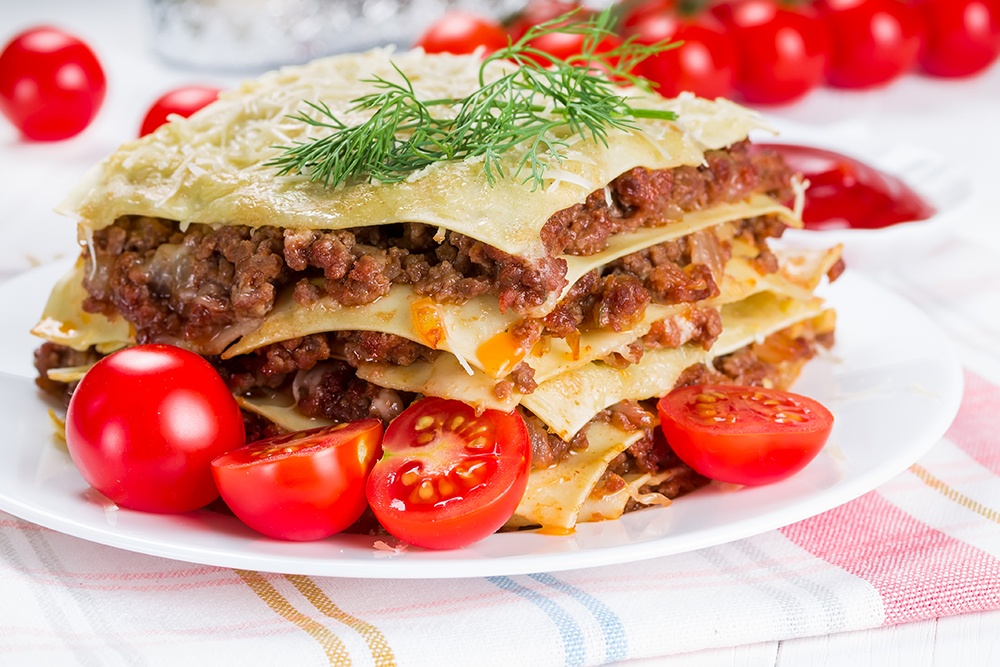
Lasagna Nutrition Profile
When eating lasagna, it’s important to understand its nutrition profile. The common components of lasagna have the following (this varies from recipe to recipe):
- Carbohydrates – Pasta is rich in carbohydrates. So, if you’re using lasagna sheets in your recipe, a 2-ounce serving of this dish will provide you about 40 grams of carbs.
- Protein – Meaty lasagna recipes are particularly high in protein. An ounce of meat content in your lasagna will give you around 7 grams of protein. And if you’re using mozzarella cheese (which is also high in protein), this will provide you with an additional 6 grams or so of protein.
- Fat – Meat and cheese ingredients also carry fat. If you want to avoid saturated fat in your dishes, use minimal meat and cheese ingredients.
- Vitamins and Minerals – For a typical lasagna that has pasta, meat, cheese, and tomato sauce, the following vitamins and minerals are present:
- B vitamins
- Iron
- Calcium
Also, if you add vegetables to your lasagna recipe (such as spinach, zucchini, bell peppers, etc.), this will increase its Vitamin A and Vitamin C content.
Lasagna Health Benefits
In spite of not being considered as a truly healthy dish, eating lasagna has the following health benefits:
- Tomato based lasagna recipes are high in lycopene. Lycopene is an antioxidant that’s particularly helpful in combating free radicals that can cause cancer and other serious diseases.
- The cheese ingredients in lasagna provide for high calcium content. Calcium helps in reducing the risks of osteoporosis (especially in women after menopause). However, since cheese is also high in fat and calories, you can opt for the low-fat varieties (such as cottage cheese) or substitute some of the ingredients with other low-fat components (like tofu, soya-based cheese, etc.)
- Lasagna is a dish that can make use of a lot of vegetables. Here are just some of the veggies that you can include in this dish:
- Carrots
- Beans
- Eggplant
- Zucchini
- Spinach
- Capsicum
- Onion
- Garlic
- As we all know, increasing one’s intake of vegetables helps in preventing diseases like diabetes, heart problems, cancer, etc.
- You have the option of using whole grain pasta in lasagna. Whole wheat is healthier than refined grains since it’s higher in fiber, vitamins, and minerals.
Health Concerns
Lasagna can be high in fat and carbohydrates. To make healthy lasagna recipes, consider the following:
- Use Italian Turkey sausage over ground beef and pork as this is leaner in nature.
- As much as possible, increase the vegetable content of your lasagna recipes as healthy recipes
- Add mushrooms to replace meat in your lasagna. Mushrooms provide meaty taste and texture and are lower in calories and fat content.
- Use skim and low-fat types of cheese instead of the full-fat versions which are high in saturated fat and calories.
FAQs
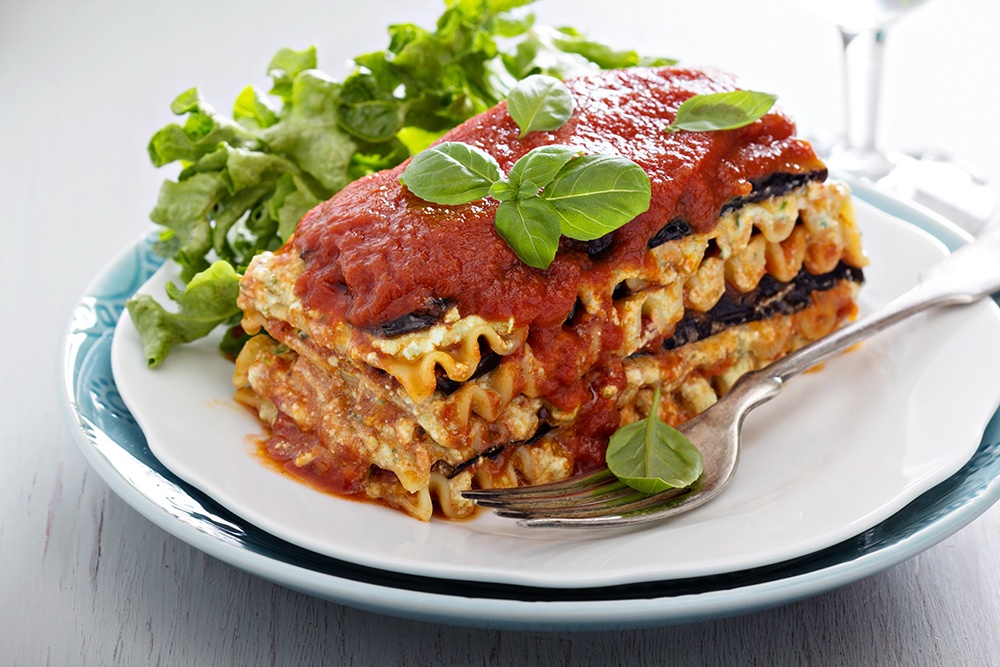
How long does it take to cook lasagna?
Lasagna typically requires 45 minutes of cooking time in the oven.
How long does it take to reheat lasagna in the oven?
Typically, it takes around 20 minutes to reheat a pan of lasagna in the oven.
Is lasagna just spaghetti with cheese?
No. Lasagna and spaghetti dishes have a lot of differences such as the following:
- Lasagna uses broad, flat noodles while spaghetti pasta is long, and not that thin.
- Lasagna noodles are basically made from flour and eggs. Spaghetti dough uses water and flour.
- Lasagna typically requires a dry environment to cook (oven). Spaghetti, on the other hand, is boiled in water (wet environment)
Why does my lasagna always topple over like dominoes when I cut into it but restaurant lasagnas stay perfectly stacked?
Most of the time, it’s one of 2 things – your lasagna either has too much moisture (too saucy) or you didn’t allow it to rest (and become stable) before you cut into it.
How can you avoid making a dry lasagna?
The best way to avoid having a dry lasagna is to make sure that you use enough sauces. Having just the right amount of moisture will result in juicy but firm lasagna.
How do you cut eggplants for lasagna?
If you’re going to substitute eggplants for lasagna noodles, cut it into many thin pieces lengthwise.
What temp to cook lasagna?
The standard cooking temperature when cooking lasagna is 350 to 375 degrees Fahrenheit.
What cheese to use for lasagna?
The most common cheeses used in lasagna are Ricotta, Parmesan, and Mozzarella. However, you can also use Cottage cheese, Goat cheese, Gruyere, Gorgonzola, Fontina, Asiago, Brie, Cheddar, and other types of cheeses.
Conclusion: Understanding Lasagna and Loving It
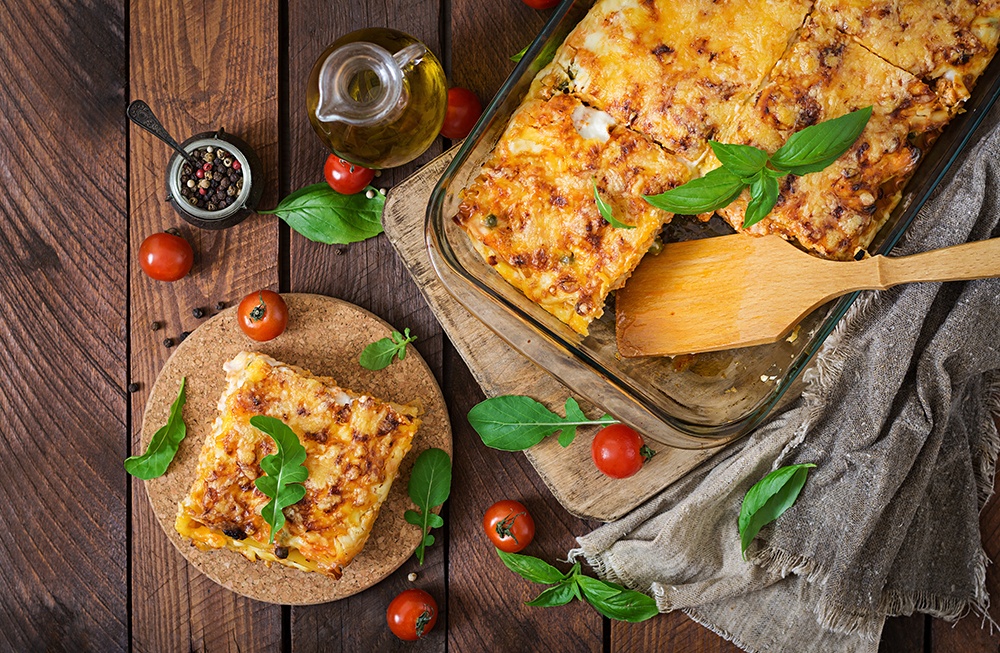
While lasagna is not diet food, you can customize recipes to make it healthier without sacrificing its flavor and texture too much. Vegetables go really well with lasagna dishes – so, you can up your veggie consumption in the process as well.
When eaten in moderation, lasagna is a filling and satisfying dish. Its versatility also makes food preparation (and consumption) more enjoyable. We all love lasagna – that’s a fact!
Let me know your thoughts about this post if lasagna is one of your favorite foods, ok? You can also share it with your friends (especially the many recipes included in this article).
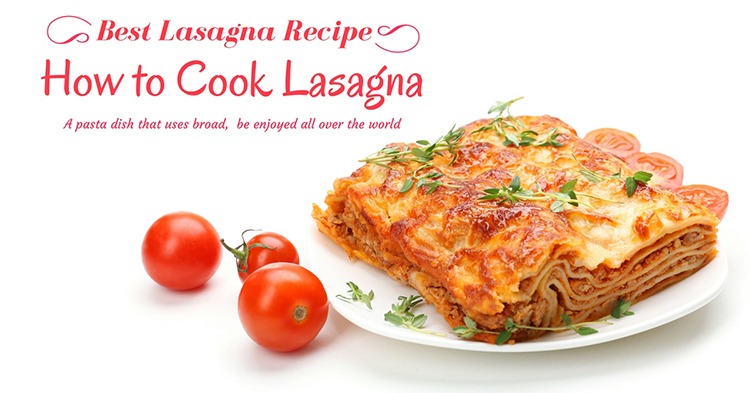





















Leave a Reply